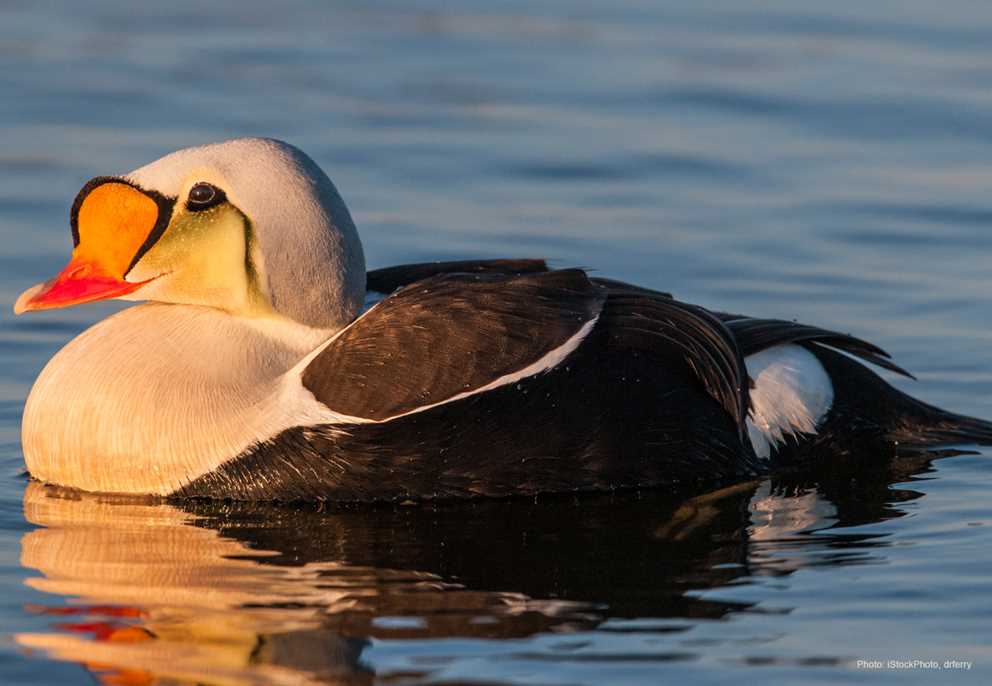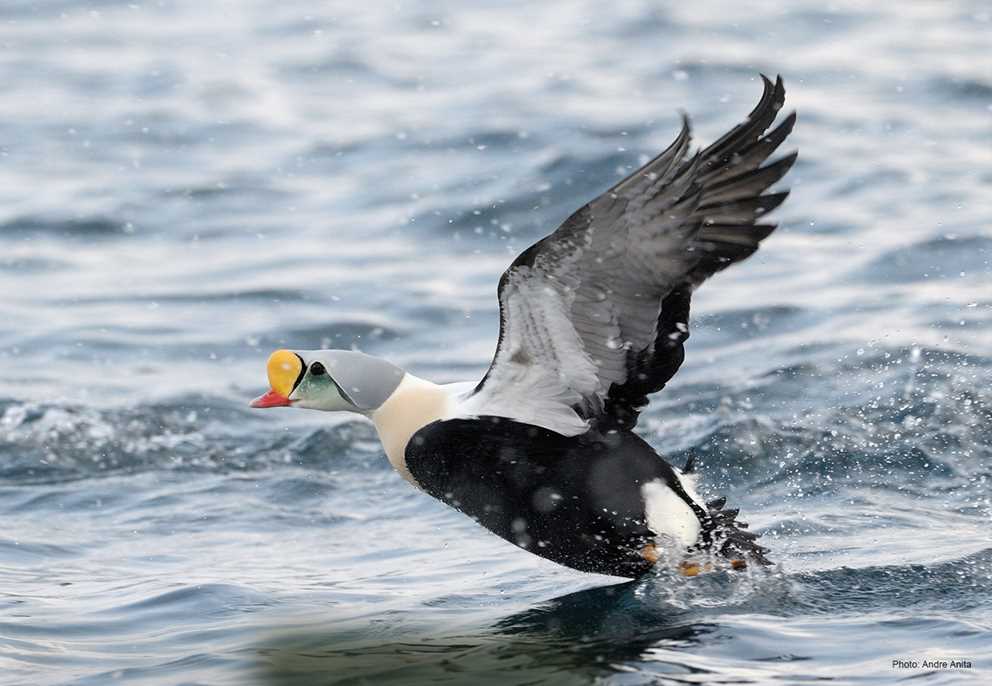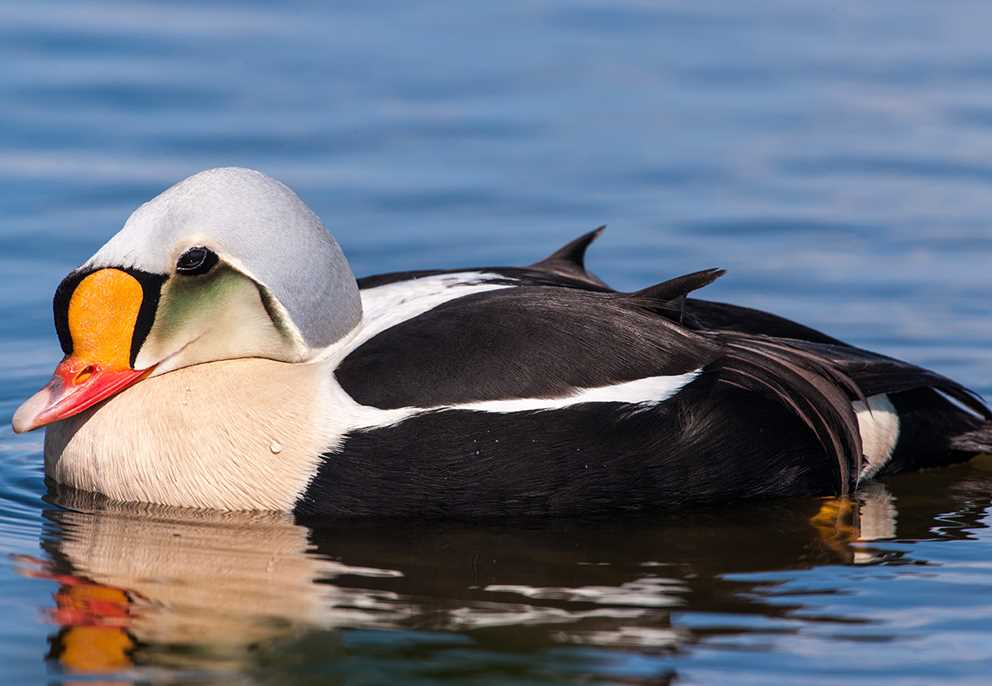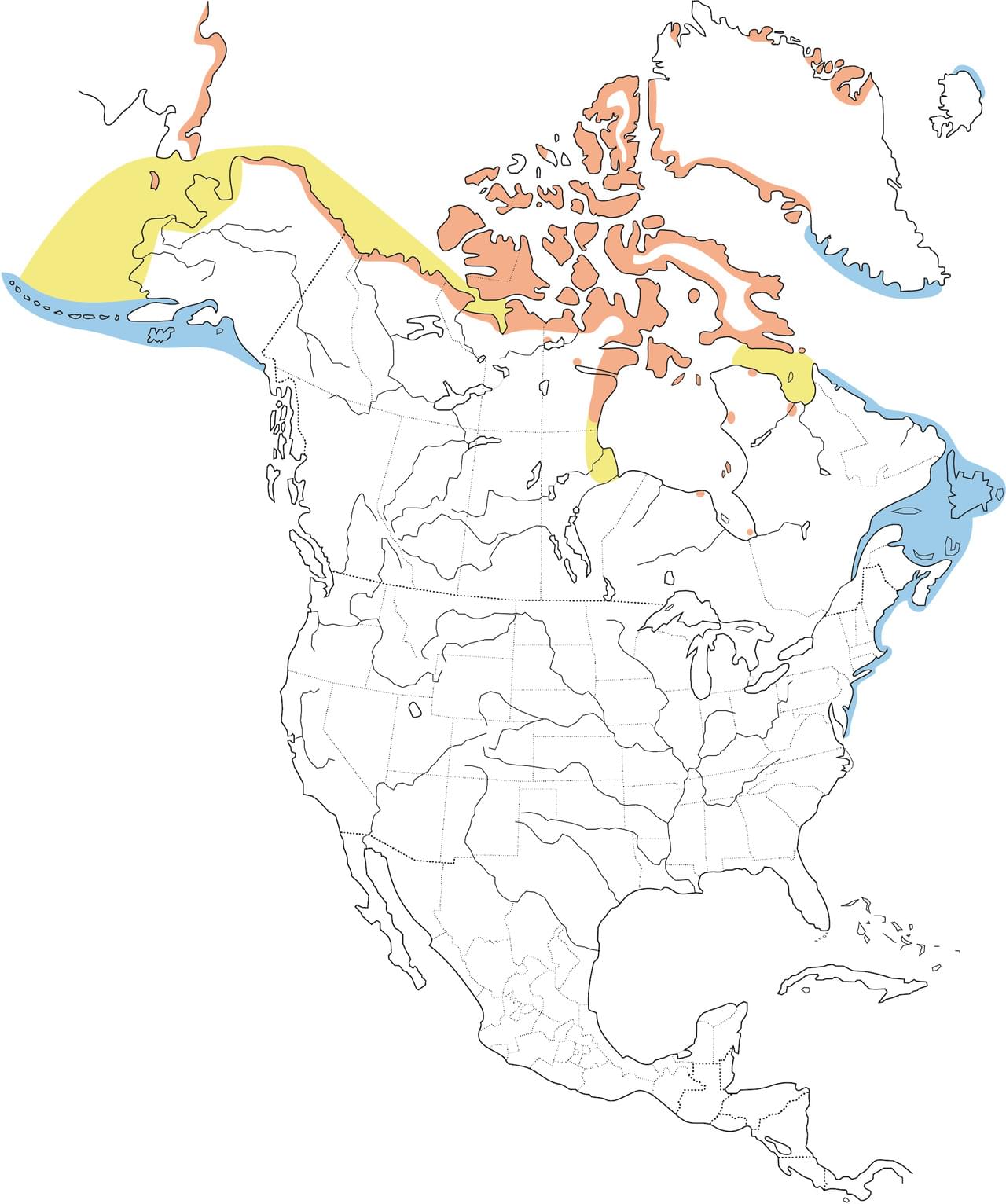Breeding
The king eider has a circumpolar distribution. In North America it breeds along the Arctic coast from Alaska to Greenland and along most of the northern Hudson Bay shoreline. King eiders generally nest in vegetation, often adjacent to small lakes and ponds or on small islets on the coast and lay an average of 4-5 eggs.
Latin: Somateria spectabilis
Average length: M 23", F 21"
Average weight: M 3.7 lbs., F 3.5 lbs.
Description
Male king eiders have a black lower back, rump, scapulars, tail coverts, breast, belly and sides. The tail is brown-black and the bill is orange, sweeping upward into an orange frontal shield outlined in black with a pale blue crest. The neck, chest and foreback are creamy white. They have a white patch at the base of the tail and in the forepart of the upper wings. The legs and feet are dull yellow to orange. Female king eiders are tawny-brown, barred with dusky brown chevrons ("V" marks) that can be similar in color to common eiders. The bill and facial skin are a dark olive-gray and the legs and feet are grayish.
Food Habits
King eiders dive great depths to feed on mollusks, crustaceans and aquatic insects. They also feed on eelgrass, wigeon grass and algae. There is a record of one king eider feeding on the bottom in 30 fathoms (180 feet) of water in the Bering Sea.
Population
Migration counts from the mid-1990s provided an estimate of 375,000 birds. There are occasional, dramatic population fluctuations that may be the result of the late breakup of sea ice, severe weather conditions or starvation periods. Due to the remoteness of their range, little is known about the current population status. However, counts of migrating individuals in Alaska suggest a decline of 56 percent since the mid-1970s.
Migration and Wintering
The western migration corridor for the king eider extends from the coast of Alaska to the Adelaide Peninsula in Canada. In the east they travel from Southampton Island, Boothia Peninsula, and Ellesmere Island to the southwestern coast of Greenland. They winter as far north as the seas remain ice-free. The majority of the western population winters at sea along the Alaska Peninsula and Aleutian Islands, with rare sightings off British Columbia and California. The eastern population winters off the coast of southern Greenland, Labrador, Newfoundland and New England, and occasionally as far south as Florida.





